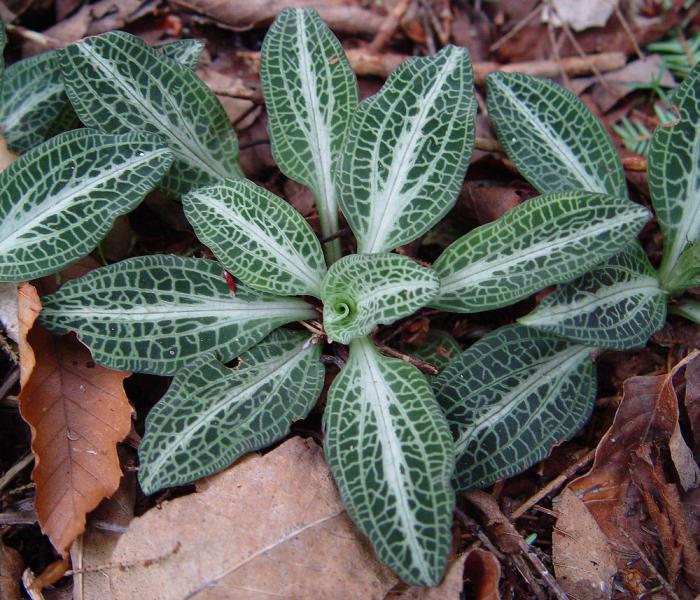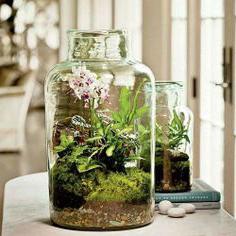To say that orchids have become very popular and common in our homes and apartments is to say nothing. They are collected, presented as a sign of sympathy or as a gift, they are admired. Precious orchids with very decorative foliage occupy a special place among this magnificence. Possessing a rather capricious disposition, they still firmly won the love of flower growers.
How are precious orchids different from ordinary ones?
Mainly due to the fact that they are grown not because of magnificent large flowers, but for the sake of beautiful leaves with a velvety surface and a unique mesh of patterns on it. Precious orchids most often have inconspicuous inflorescences, but they have a delicate and pleasant aroma. The color of the leaves varies widely depending on the species, it can be silver, emerald or light green, saturated cherry, red and even almost black. The veins are always painted in a contrasting color, they create something like openwork lace from gold, silver, bronze or copper threads. The main species of orchids in this rather heterogeneous group are represented by the following genera: Hemaria (Ludisia), Makodes, Anektohilius, Dossinia, Gudayera, Kheirostilis, Malaksis, Sarkoglottis. There are others, but they are less common in home culture and little known.
Where did the deciduous orchids come from?
Precious orchids for the most part are inhabitants of the moist, rain, tropical forests of Japan, China, India, Vietnam and some other countries of Southeast Asia. They can also be found in distant Madagascar, rich in endemic species, in New Zealand, Brazil. Some species of orchids with decorative leaves, such as creeping goodyear, are found even in Scandinavian countries.
Rod Ludizia: a brief description
It is a genus of evergreens, formerly known as Hemaria. Homeland are Malaysia, China, Vietnam and Sumatra. In the natural environment, plants grow on soft forest litter, differ in miniature size (about 15 cm). Representatives of the genus are characterized by sympodial branching of the main stem, due to which small bushes form. On each branch there are about five leaves, which have an olive or purple color, with light and silver venation. Dimensions - about 7 cm in length and 3-4 cm in width. Rhizome is highly branched and well developed. Flowers inconspicuous, small, appear on a long peduncle. They are less effective in comparison with other relatives, but graceful, with a delicate aroma.
When compared with other species, then this is perhaps the most unpretentious orchid. She is quite comfortable with her home environment, she even gets used to the low humidity in the room, but it still affects her appearance. In indoor floriculture, the two-color dudisia is most famous (pictured above).
Rod Macodes: Description
This genus includes terrestrial and epiphytic plants, also having sympodial branching. The homeland of their growth is the tropical forests of Oceania and Southeast Asia. As a houseplant, the rare species Macodes petola is best known (pictured).
Its leaves have a rich green color and gold veins. The dimensions of the plant are miniature, only 7-8 cm in height, the stems spread along the surface of the substrate. At home, he feels rather well, but grows slowly. Very unpretentious orchid. Foliage falls, if we allow strong drying of the soil, while any decorative effect is lost.
Rod Dossinia
Precious orchids of this genus are represented by only one species - marble dossinia. This is a land plant with a fleshy stem that spreads along the substrate. Homeland are the tropics in Indonesia. These are not very large orchids in height (10 cm). The buds, however, are located on a long peduncle (up to 30 cm), and the flowers have a brown tint with a white lip. Of particular decorative value are large succulent leaves. They have a rich olive green color, an ovoid shape with pointed tips and a dense network of golden yellow veins.
Genus Anectochylos
By way of life, representatives of the genus are mainly terrestrial plants and much less often lithophytes (grow on stones). Precious orchids of this genus are considered perhaps the most beautiful among their relatives. They grow up to 10 cm in height, have creeping stems with large leaves, as if made of velvet. Venation most often silver or yellow or reddish. Sometimes they form a very dense network, then the color of the surface of the sheet is almost white. Orchid as a whole takes on an unrealistic appearance, as if it were forged from metal. In stores, you can often find anectochylus beautiful or striped. A feature of cultivation is the need for a not clearly defined period of winter dormancy.
Gudayer clan
Representatives of the genus Gudayer are mainly terrestrial plants, in exceptional cases - epiphytes. Leaves - various shades of green, a network of veins - pinkish or white. Goodyear bristly orchid (hislida) is the most common in indoor culture.

The photo shows that the lanceolate leaves are collected in a dense rosette, have a saturated green color with a bluish tint and a bright silver-white mesh of vessels. The natural habitat is the lower reaches of the tropical forests of Vietnam and India. The leaves grow large, 7-8 cm long, the color ranges from pure green to green with a pink bloom. Much less often on sale you can find goodyear creeping, mesh and fluffy. Names determine their appearance. The first species was already mentioned earlier; it has some individual features. So, for example, the seeds of a creeping goodyear orchid are so small that there is enough light air flow to move them. Another interesting fact is that it does not occur in young forests, but only in old, centuries-old.
Rod Malaxis
The second name of the genus is the Meat Carrot, which directly speaks of the leaf structure of these plants. Species, there are about three hundred, grow on all continents. These orchids are poorly suited for home growing, but are still sometimes found. For example, malaxis is beautiful-leaved (pictured). It has elongated leaves of a brown hue with slightly fringed white edges.
Less common genders and species
The genus Kheirostilis is represented in nature by 54 species. Chinese cheyrostylis is most popular, its second name is “gray mouse”, given for the unique silver-gray color of the leaves.
Representatives of the genus Sargoglottis (pictured) are very rare guests in stores. They are appreciated for the incredible color of the leaves, they have not only stripes, but also spots of contrasting shades with a metallic coating. A striking representative is sarcoglottis scepter.
Orchids of the genus Zeusxin have velvet dark green leaves, which are pierced by silver stripes and threads.
Care Features
Precious orchids are quite varied, and each plant has its own special requirements for care. But there are general, basic rules, they are as follows:
- As a soil, use special mixtures with the obligatory addition of peat and sphagnum; the substrate must pass air and at the same time retain moisture. The pot should be wide and low, with drainage holes.
- The right place is, firstly, by no means bright light, but only diffused (partial shade), soft sunrays are permissible in the morning and evening; secondly, away from central heating.
- Orchid in winter requires additional lighting, daylight hours should last about 12-14 hours, otherwise the shoots will stretch and lose their decorative effect.

- Watering only with soft water in the morning and afternoon, avoiding leaf into the sinuses. We must try to maintain an ideal moisture balance, avoiding its excess, otherwise this will lead to the fact that the roots of the orchid begin to rot.
- The optimum air temperature in summer is 25 degrees during the day and about 20 at night, in winter the indicators are slightly underestimated. Too strong a difference during the day will stimulate flowering.
- Many precious orchids prefer an enclosed space with a special microclimate inside; To do this indoors is simple enough if you have an old aquarium or a small glass container.
- Orchid seeds are now quite easy to purchase, especially via the Internet (the main supplier is China), but the further process most often does not give positive results, so it is better to propagate them vegetatively or buy in a store without wasting time.
- Vegetative propagation is possible with the help of apical cuttings, and in some species a baby appears after flowering in leaf axils (goodyear orchids).
- Humidity is important, so plants need to be constantly sprayed, put under a warm shower that mimics tropical rain.
- Most often, inexperienced gardeners have a question about why the orchid turns yellow. There can be several answers, the most obvious reasons are an excess of moisture (at the same time, signs of decay most often appear) or its lack (associated with wrinkling of leaves), sunburn (local spot).
Buying these amazing and exotic flowers in stores or taking them as a gift, we often don’t even know the name of the orchids. Therefore, the appearance of a tropical guest in the house should begin with an acquaintance. Determining the type and genus of the plant, you take the first steps towards successful cultivation.
Orchids with decorative leaves can be a decoration for any home. These are ideal plants for small apartments, as well as for a beautiful and unusual green corner in an old aquarium - it all depends entirely on your imagination.